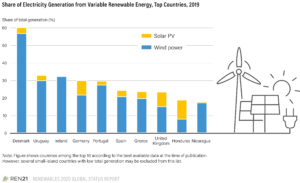
The urgency of the problem is increased by extreme weather and ageing infrastructure. Although it is not more expensive to generate energy than usual, the costs rise when we consider the transmission of energy. Most of the electric infrastructure in the United States was built in the 1960s and 1970s, which means a large portion of the power grid is close to 50 years in operation. To put it simply, moving electricity from point A to point B is becoming more expensive for utilities and power suppliers. There are several causes for this, but the fundamental one is that the state now requires more energy than it did fifty years ago. It is harder for utilities and regulators to do so the more power that has to be transported across the system. Next, the current electrical infrastructure has suffered due to changes in weather patterns. By this time let us discuss the actual and New Power Texas reviews .

The majority of Texas’ infrastructure was not prepared for the bitterly cold temperatures it saw last year. Hurricanes that occur more frequently and with greater force wreak havoc on infrastructure, electricity lines, and other energy sources. Utility providers will need to change their rates in order to safeguard their bottom line as they deal with increasing expenditures for repairs and maintenance. an ice storm In the winter of 2021, recurring blackouts and the shutdown of many power units in Uri revealed the frailty of the old infrastructure. Due to the overwhelming demand for heat, those who kept their electricity on throughout the disruptions were hit with astonishingly expensive charges. Future electricity costs are exceedingly difficult to anticipate since they are closely related to climatic conditions, economic growth, and global events. Energy price increases can also be related to events occurring halfway around the world, as we have witnessed with recent events in Europe. If history is any indication, the state’s electricity tariffs won’t likely go down without making big adjustments to its infrastructure and energy supplies. If Texas increases its capacity to regulate its power supply through improved weatherization and greater investments in larger, more potent infrastructure, rates are expected to decrease. Texas’s unregulated energy sector is prone to volatility, with frequent changes in energy prices. Consumers must exercise caution while selecting the appropriate power plan from a reliable electric provider in order to avoid paying high electricity bills. Retail power providers (REPs) often provide fixed and variable rates, which are the two most common varieties. With fixed rates, your electricity will remain at the same price for the whole life of your contract. With variable rates, your bill will change according to the state’s current cost of power. Customers who sign a fixed-rate contract can prevent expensive energy price increases like those many people experienced last winter. Additionally, since rates are typically on the rise, committing to a long-term agreement will offer the most security against rate increases that occur year after year. Some contracts have a two- or three-year duration. Additionally, despite some seasonal variance, power rates are rising. Therefore, the longer the length of a fixed-rate contract you sign, the more probable it is that you will keep a cheaper power cost than if you renew a contract year after year.
